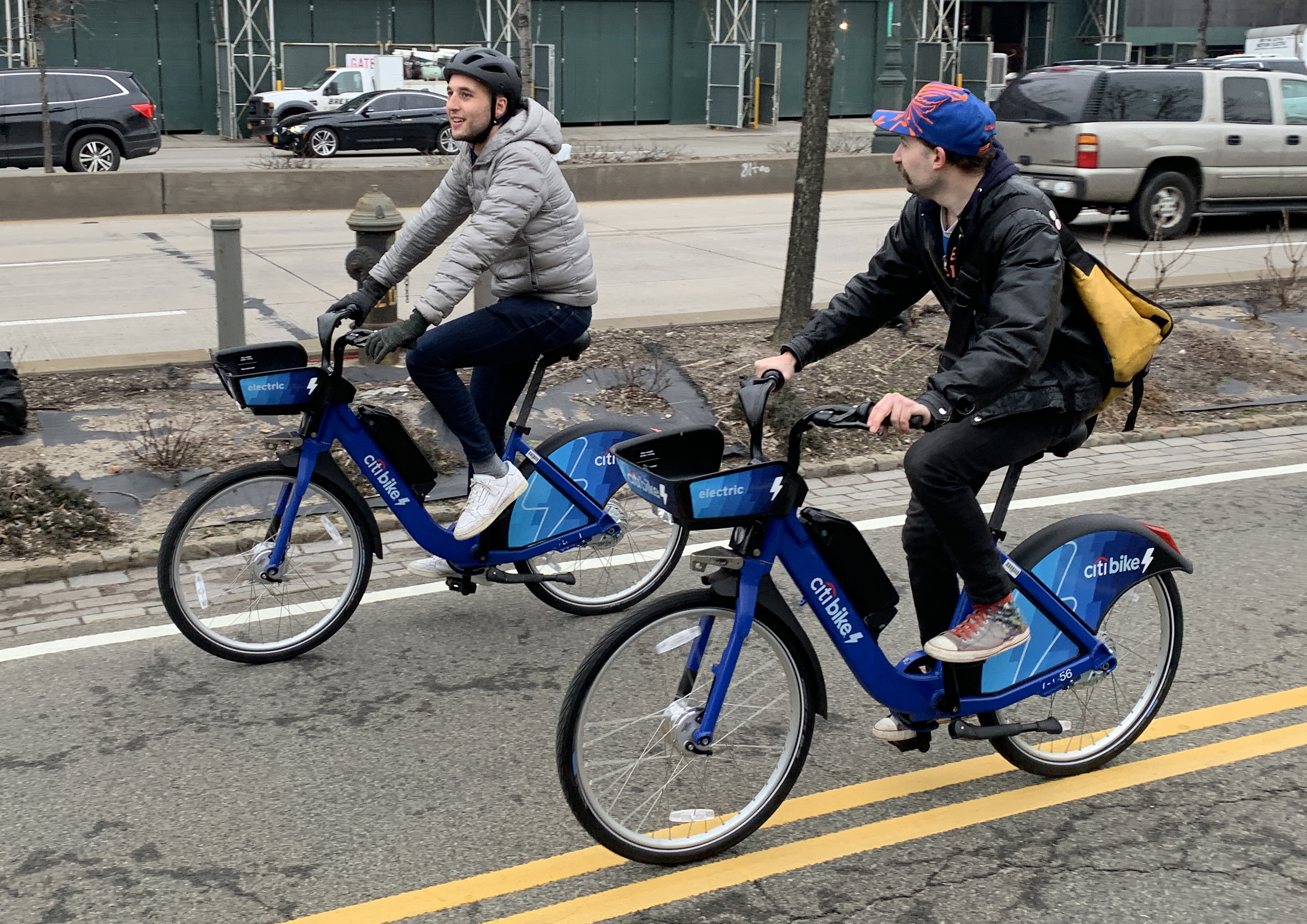A Manhattan community board has asked the state to step up for cyclists, joggers, rollerbladers and walkers and give them all more room by taking away a lane of West Street — aka the West Side Highway — from car drivers.
Manhattan Community Board 2 fired off a letter to Gov. Cuomo, the state DOT and the state Parks Department earlier this month asking officials to expand the heavily used Hudson River Greenway into the westernmost auto lane on the West Side Highway — an emergency effort to give New Yorkers a socially responsible way to use the crowded route for a way to running, walking, biking or rollerblading.
The board is calling for the roadway lane to be turned into a two-way protected bike lane, fortified with "jersey barriers and cones."
"This will free up space on the Greenway for runners and roller-bladers and provide more room for pedestrians to move within the Park" which has "limited space in [its] current configuration," stated the May 13 letter from the community board, which comprises the West Side from Canal to 14th streets.
Neighboring Community Board 4 joined the request for a West Street bike lane, which means that community boards stretching from Canal Street to West 57th Street (where West Street becomes a true elevated highway) support the bike lane idea. CB2 Vice Chairman Dan Miller said that the board wrote its letter "to separate cyclists from runners, and runners from slow-moving pedestrians" as the weather continues to improve, yet the city remains in the grip of the COVID-19 pandemic.
History isn't on the community boards' side though. Gov. Cuomo's state DOT dismissed the idea of taking a lane in late 2019 with a baseless claim that it would lead to more traffic congestion (the opposite is more likely, according to the theory of induced demand).
"To remove a lane would congest the road," state DOT Regional Traffic Safety and Mobility Director Adam Levine told Streetsblog last year when the city lowered the speed limit on West Street to 30 miles per hour. The state DOT did not outright dismiss the request this time around; a spokesperson for the agency said that the letter was "being reviewed."
Hudson River Park Friends, the fundraising arm of the park's overseers, signaled very cautious support for the idea of taking a lane. The statement is also notable in that it puts a group that professes to be a booster of the park on the record as defending the supposed needs of drivers.
"If it's possible to expand the available open space for pedestrians in Hudson River Park and on the Greenway by allowing a portion of southbound West Street to be opened up to cyclists and joggers, without creating terrible traffic congestion or interfering with emergency vehicles, then that might be a creative temporary solution to overcrowding in the park," said Connie Fishman, the group's executive director.
Even a temporary bike lane expansion into one 11-foot-wide lane on West Street, which advocates have called for in the past, looks like a compromise compared to a suggestion from another resident of the West Side of Manhattan.
Maury Schott, the former vice-chairman of CB2's traffic and transportation committee, told Streetsblog that he reached out to state Senator Brad Hoylman's office earlier in May with a suggestion that all three southbound lanes of West Street be given to cyclists, skateboarders and rollerbladers, and that northbound and southbound traffic share the four remaining lanes on the east side of West Street. Schott's idea is more than a quick and temporary fix, and would result in West Street looking more like a traditional street carrying two-way traffic than the highway it currently resembles.
According to Schott, this design would ensure that drivers on West Street actually follow the new 30 mile per hour speed limit that's been set for the road. Schott also suggested his plan better protects vulnerable road users because it would not require placing Jersey barriers down dozens of blocks of streets. Instead, he proposed putting the barriers in gaps in the median between the north and south lanes on the street.
"I noticed the crowding issues on the park and the piers, but I've also noticed there were substantial speeding problems on West Street," Schott said about the impetus for his proposal. An email shared with Streetsblog shows that someone Hoylman's office told Schott the senator would run it by the New York State Department of Transportation.
Hoylman's office did not respond to a request for comment on which plan he preferred.






